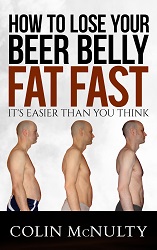The most common question I see when people are new to the zone diet, is: “What is a Block?” usually followed by a whole host of further block related questions (especially when it comes to zone fat blocks) which only go to prove that the original answer wasn’t good enough. So I’ve decided to explain why all the confusion, in one place, here goes:
Basically there are 3 ways to measure food on the Zone. Each one is more accurate, but more complicated, than the previous one:
1) The Eyeball method.
2) The Block method.
3) The Gram method.
The Eyeball method says look at your plate, fill 1/3 with lean protein, the thickness of your hand, fill 2/3 with favourable carbs, and add a dash of mono unsaturated fat. Job done.
The Block method says you can break food into Protein, Carb or Fat blocks. Add blocks of food from each group so you have a balanced meal. Simplicity comes from each food belonging to only one type of block (with a couple of exceptions like milk or yoghurt). This is why an egg say, counts as protein only, even though it contains fat as well. Yes there is some fat in all protein sources, but the block systems averages it all out and takes away that complexity from you.
The Gram method is the most accurate but the most onerous and says that 1 block of carbs is 9g, 1 block of protein is 7g and 1 block of fat is 3g. This allows you to be more accurate, as if you know that an egg contains 4g of fat, you know that 1 egg also has 1 and 1/3 fat blocks in it, and can compensate accordingly. This is why it’s sometimes right to say that the egg counts as fat as well.
(As a slight aside, egg yolks are one of the few things that Dr Sears advises not eating, better to have 2 egg whites as a single block of protein. If you want to know why, it’s all to do with Arachadonic Acid and “bad” eicosanoids.)
So I suggest you pick a Zone method (2 or 3 usually) and stick to it, or you’ll get yourself confused as people appear to give you contradictory advice. I spend my life reading labels it seems, here’s how to interpret a food label:
- Read the Protein in grams. 7g = 1 block of protein.
- Read the Carbohydrates. 9g = 1 block of carbs.
- Read the Fat. 3g = 1 block of fat.
So the pot of yoghurt I have in my hand has:
- 4.5g Protein = 2/3 of a block.
- 6.6g Carbs = 2/3 of a block.
- 4.5g Fat = 1.5 blocks.
Two factors complicate this:
1) For carbs, you should subtract fibre, in grams, before working out the blocks. This is because we only really count the insulin effecting carbohydrates, and fibre effectively protects us from the full effects of the carbohydrates.
2) Usually you would say 1.5g of fat is a block, not 3g as I did above, but that’s only because we normally assume that every block of protein contains half a block of fat as well. This is almost always true, unless you’re eating a specific zero fat protein source, like protein powder (yuck!). So if you are following method #2 above (the block method), you should count fat blocks to be 1.5g of fat. However if you are following the Gram method (#3 above) then you should be are accurately counting the fat in your protein source, so take a block of fat to be 3g.
I hope that makes sense!?

